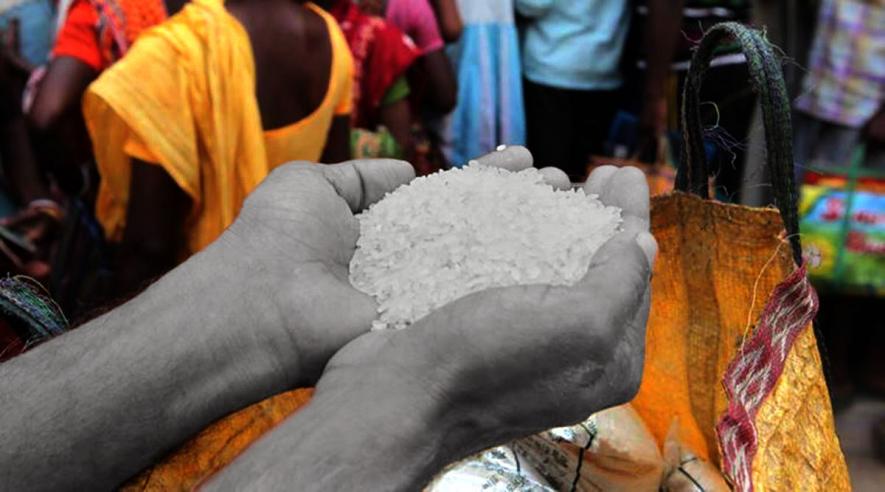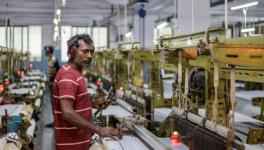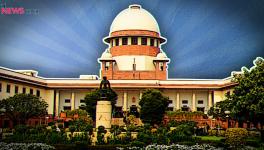Families Struggle to Put Food on Table as Govt Fails in Expanding NFSA Coverage

"My husband is a daily wage worker. After the Covid-19 lockdown, he only gets to work two to three days a week. His income is not sufficient to feed the family of four people. I applied for a ration card in 2021, thinking it would solve a few problems. Two years have passed and I am still waiting to receive the card,” said Sangeeta, who lives in a two-room house in Kusumpur Pahadi, one among the several slums clusters in South Delhi.
When 35-year-old Sangeeta came to Delhi about 10 years ago from Ayodhya, she had not thought that managing two meals a day would be such a challenge for her family. However, she blames the loss of work and recent inflation in edible food items for her hardships. The lockdown added much to her misery, and she saw hope in getting subsidised food grains by getting a ration card.
“I had applied online. Out of desperation, I also go to its office hoping that they would notice me and may take action. With the recent increase in the prices of food grains, we are barely surviving. A ration card would have been of great help,” she added.
Sangeeta is not alone in her struggle to get a ration card in the national capital. In March 2022, a reply to Anjali Bhardwaj’s RTI request (activist associated with the ‘Right to Food Campaign’) revealed that Delhi alone has 2,93,184 ration card applications pending.
The unavailability of ration cards
What Sangeeta’s case points to here is the structural exclusion of a large population from their right to food due to the requirement of a ration card – an official document that indicates an individual's economic status and enables them to avail of the subsidised foodgrains under the Public Distribution System (PDS).
The National Food Security Act (NFSA) which was passed in 2013 to address the country's food insecurity issue, governs the PDS. According to this NFSA, the PDS system is supposed to cover 75% of the rural, and 50% of the urban population. The Act requires a collaboration of the Centre and state governments where the central government is responsible for allocating food grain, and state governments oversee the identification of beneficiaries and effective implementation of the scheme.
As per the latest government data, 81.34 crore Indians are covered under the NFSA, which experts believe is far less than the number of eligible persons. There has been an ongoing demand for an expansion in the NFSA coverage to solve the issue of the non-availability of ration cards. However, the scheme's total beneficiaries are calculated based on the estimated population by Census, as stipulated by Section (9). It has been 12 years since the last Census took place. Thus, the number of beneficiaries under this programme is based on the Census data from 2011. The government has not considered population growth while determining the number of ration cards.
The lack of Census data has kept almost 10 crore Indians out of PDS, as per the data presented by economists Jean Dreze and Reetika Khera.
The census, which was supposed to take place in 2021, was postponed due to the Covid-19 lockdown. On July 28, 2022, in a reply to a question asked in Lok Sabha, the Centre said that India’s decennial Census 2021 had been deferred till further orders due to the Covid-19 pandemic. Further, on January 2, 2023, the Registrar General of India (RGI) extended the deadline for freezing administrative boundaries to June 2023, meaning that the process is unlikely to begin until the next general election in 2024.
Indians have long faced endemic malnutrition and starvation. Globally, India ranked 107 out of 121 nations in the 2022 global hunger index, which puts it in the "serious category" of hunger issues.
In addition to this, the pandemic aggravated these vulnerabilities in terms of socioeconomic conditions.
Delhi has been a hub for migrant workers. As the population grows, so does the need for new ration cards.
The matter of exclusion was also raised in the Supreme court in a petition filed by Bandhua Mukti Morcha in July 2021.
The court, in its judgement, agreed that an increase in the NFSA coverage is necessary. It further directed the Union of India to contrive a formula to ensure that the benefits under the NFSA are not limited to census data from 2011.
However, the government, in its response, filed an affidavit asserting that it does not have Census data available and that increasing the coverage of NFSA would need an amendment change.
“While there is a need to expand the number of beneficiaries to factor in the increase in population, it is also important to take into account the fact that the percentage of the vulnerable population would have gone down over the years,” it further added.
In the same affidavit, the NITI AYOG argued that as the per capita income of the population in India has increased in real terms by 33.4% since the enactment of NFSA in 2013, the upper limit of 75% for rural and 50% for the urban population who were earlier considered vulnerable under NFSA would have gone down considerably.
According to experts, the government has completely misunderstood the situation since increasing per capita income is an inappropriate metric for determining the percentage of people who need rations under the NFSA as it ignores the profound disparity between income and wealth concentration in the country.
Amrita Johri, an activist associated with the Right to Food Campaign, spoke with NewsClick. She said, "Had the government actually undertaken the census, then today, ten crores more people would have actually got covered under the national food security act and would have access to food grains on a monthly basis."
She also questioned the government's intent for not using other ways to provide the citizens with food security.
"Now, in such a scenario, other things can be done. One is by using the population projection to increase the coverage. The other thing is that the eShram portals now have more than 28 crores of workers from unorganised sectors registered. The government can also cross-check their ration cards and then provide ration cards to those who do not have them. The denial of rations to people because of the failure of the government to carry out the census is absolutely inhuman,” she further added.
Get the latest reports & analysis with people's perspective on Protests, movements & deep analytical videos, discussions of the current affairs in your Telegram app. Subscribe to NewsClick's Telegram channel & get Real-Time updates on stories, as they get published on our website.
























